The Panzerjäger 1
This Surviving German Panzerjäger 1 Tank Destroyer can be found in the WTD 41 - Wehrtechnische Dienststellen - military testing and proving facilities, in Trier, Germany. Not open to the public but is occasionally on show to the public at the WTD 41 open days.
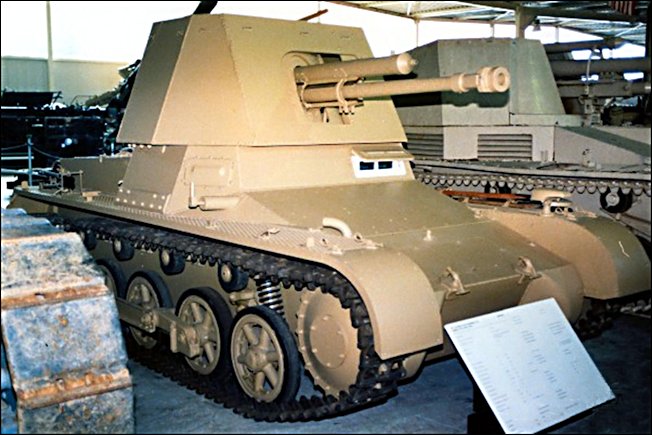
Surviving German Panzerjäger 1 Tank Destroyer in WTD 41
The German answer to the enemy's heavy tanks - Panzerjäger 1
When war broke out in 1939 the German Panzer one tank is already obsolete. It was only fitted with machine guns and designed as an infantry support weapon. It had no chance of destroying any of the medium or heavy French tanks like char B1. It's machine gun bullets would not pierce the British Matilda tank's heavy armour.
In 1941 the German standards 37 mm PaK 36 anti-tank gun issued to infantry regiments and also fitted to the fitted to the Panzer III tank also failed to penetrate front armour of these Allied tanks. The shells just bounced off. The Germans had a glut of obsolete Panzer I tanks. They also needed a mobile weapon that could penetrate their enemy's armour. A temporary answer came in the form of the Panzerjäger I.
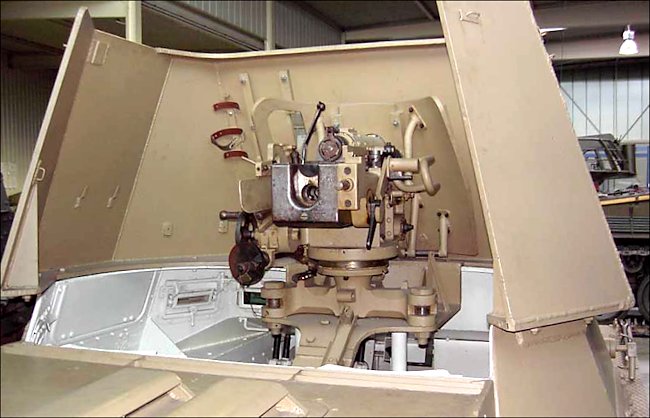
Preserved 1940 Panzerjäger 1 Tank Destroyer's Skoda 47mm tank killing gun
One of the benefits of invading Czechoslovakia for the Germans was the capturing of many of the excellent Czech Army's tanks and guns. They fitted a Czech Skoda 47 mm PaK anti-tank gun on to the converted chassis of a Panzer one Ausf B. The tanks turret had been removed and protective armour Shield fitted around the larger gun. The crew compartment had the capacity to carry 10 HE high explosive shells and 74 anti-tank rounds.
The first 132 Panzerjäger I tank destroyers were made in 1940 by a company called Alkett. The gun shield had five sides. The next 70 Panzerjager I TD's had a seven sided gun shield and were produced by the company Klöckner-Humboldt-Deutz between 1940 in 1941. A total 202 vehicles were made. They were the first German tank destroyers to see action. They took part invasion of Poland.
During the battle of France in 1940 the German Anti-tank Battalion (Panzerjäger-Abteilung) 521 recorded that they had only six Panzerjäger I tank destroyers per company. Their official strength should have been nine vehicles per company. Each Anti-tank Battalion had three companies.
They also saw service in North Africa as part of the Afrika Corps Anti-tank Battalion (Panzerjäger-Abteilung) 605. They were equipped with 27 Panzerjäger I's having arrived in Tripoli, Libya in the third week of March 1941.
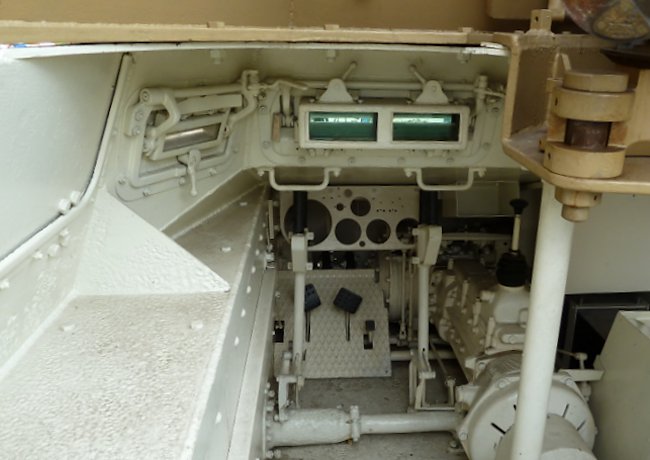
Driver's position in a Panzerjäger 1 Tank Destroyer (photo - David Reay)
The Panzerjäger I were used to fight off the British offensive during operation Crusader. German army records report that 13 of the vehicles were knocked out. By the beginning of the second battle of El Alamein, even though replacements had been sent, the Afrika Corps only had 11 Panzerjäger I's operational.
When Germany invaded Russia and opened the Eastern front with operation Barbarossa, Panzerjäger I tank destroyers were sent to try and stop the Russian T34 tanks. A total of 135 were sent. They equipped Panzerjäger-Abteilung (anti-tank battalions) 521, 529, 616, 643, and 670.
The gun crews that manned this self-propelled gun observed that the armour piercing shells could penetrate 50mm of thick armour at ranges of up to 500m. They liked the accuracy of the gun which normally found its target with the first shot. They had an effective range of 1,500m.
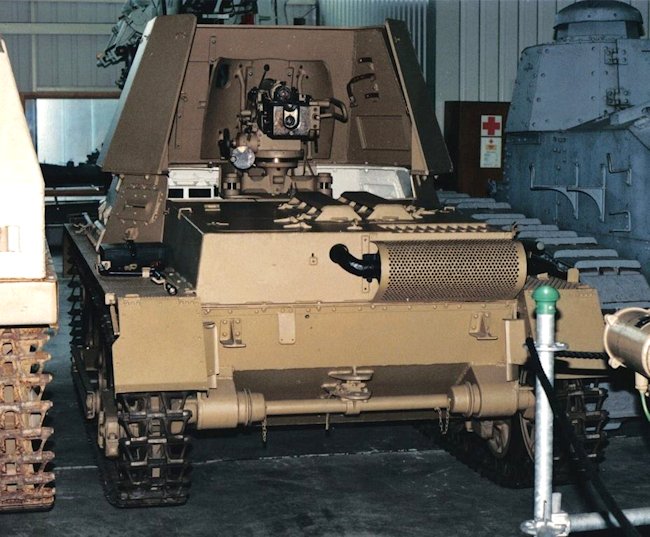
Preserved 1940 Panzerjäger 1 Tank Destroyer rear view.
Panzerjäger I's were also issued with some tungsten core armour piercing shells to use against the enemy heavy tanks as they had a higher penetration rating compared with the normal armour piercing shells. One battle report records that at a distance of 600 m they were able to take out three British Matilda II tanks using these high performing shells. I so Tungsten was a hard to get commodity so these shells were used sparingly.
What they didn't like about the vehicle was the lack of a safe observation periscope. The crew had to look over the front of the armoured shield for the next target. Exposing your heading this way was highly dangerous as you became an instant target for a sniper.
Crews also complained about enemy shell fragments piercing the gun shield armour. They also found that because of the vehicles high profile they became easy targets for enemy anti-tank guns. To survive they had camouflaged their weapons very well.
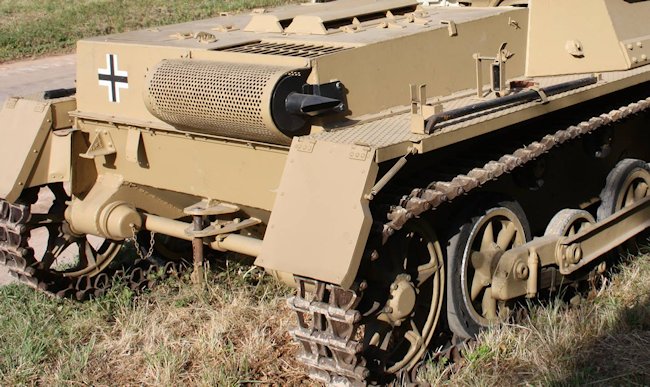
View of the rear of the track on a Panzerjäger 1 Tank Destroyer